Suenos Entremedios

Chamay Hidalgo Martinez, left, Yosvani Mejias Espinosa, bottom right, and other Cuban migrants awake after sleeping in the center of La Cruz, Costa Rica on December 26, 2015. Many government shelters have reached their capacity and new Cuban arrivals have resorted to sleeping in the streets and other public areas.
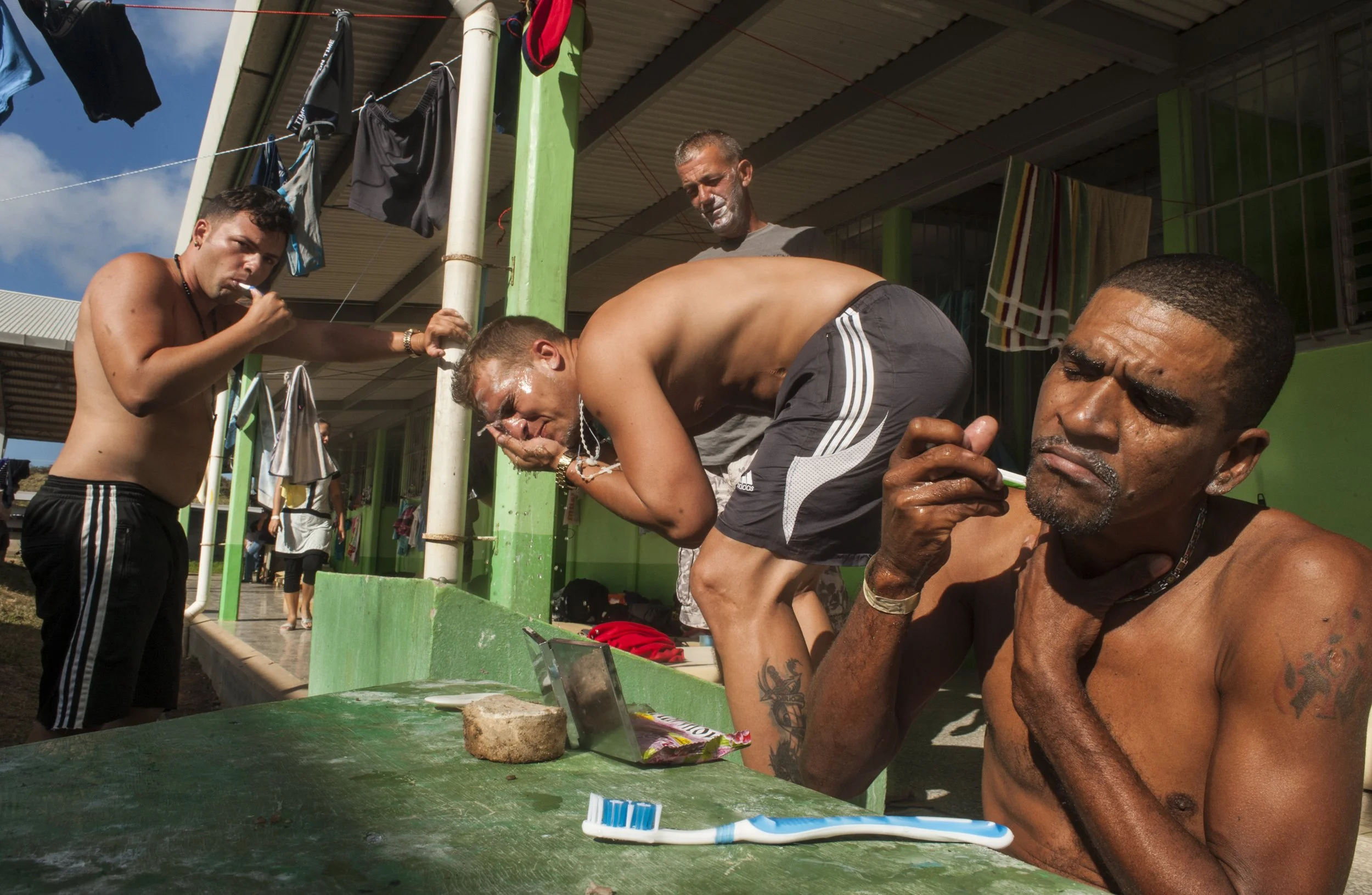
Laízaro Quintero Alvarez, from left, Dariel Pérez Pacheco, José García Pérez, above, and Vladimir Infante Hurtado shave and wash themselves in one of the Costa Rican shelters. They have grown accustom to the lack of privacy since they started their journey north from Cuba, Ecuador and through various countries in Central America.
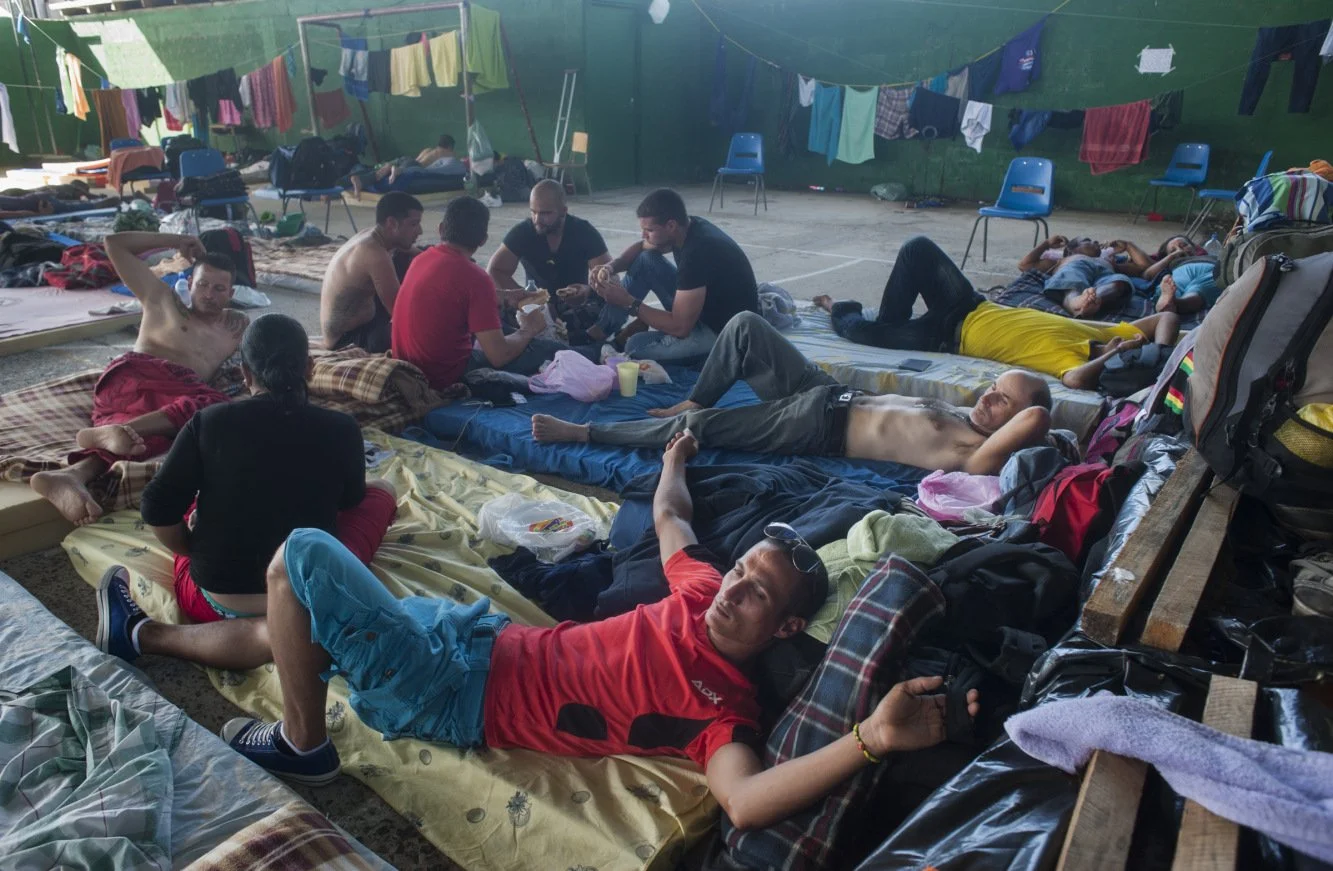
Cuban migrants rest in a government shelter in La Cruz, Costa Rica on Dec. 26, 2015. Many of the shelters are very crowded and sleeping arrangements are only foam mattresses and blankets donated by the government and local people.
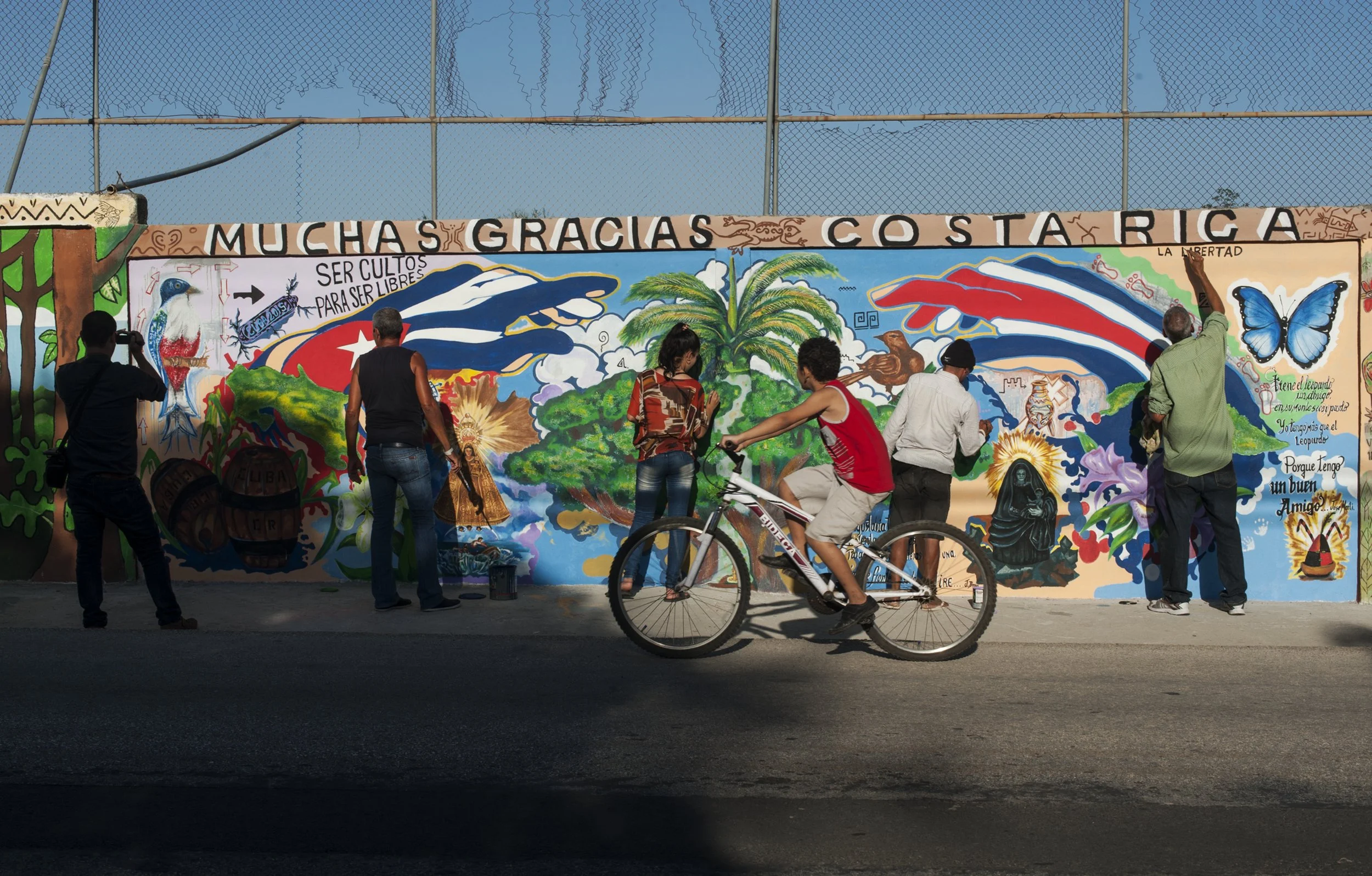
A boy rides past a group of Cuban artists that finish a mural on the main street of La Cruz, Costa Rica on Dec. 28, 2015. The mural is a combination of cultural symbols from both Cuba and Costa Rica, but it is also a gift to the Costa Rican people for helping the Cuban migrants.

A group of Cuban men listen to Felix Roque, center, mayor of West New York, New Jersey, explain the collaborative solution to transport Cuban migrants out of Costa Rica to eventually reach the United States border on Dec. 29, 2015. The Cuban-American mayor made an extended visit to Costa Rica on Dec. 22 to help the migrants and bring awareness to the crisis.
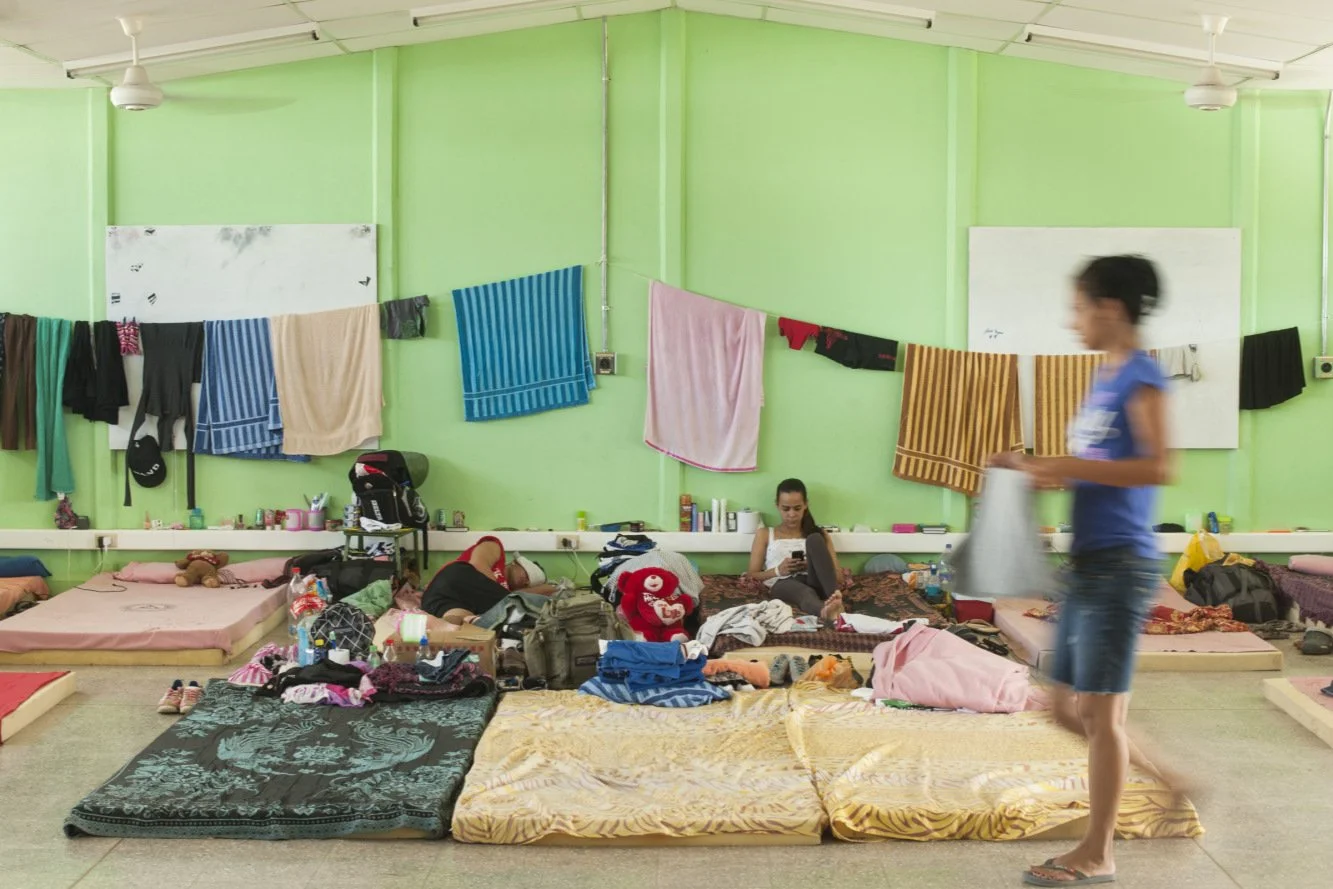
Rosalia Peraza Ullua, 26, walks past Gretel Llama Gonzalez, 25, and Gustavo Sanchez Delgado in a room where dozens of Cuban migrants sleep on Dec. 31, 2015. During the school year, this room is used as a classroom for high school students.
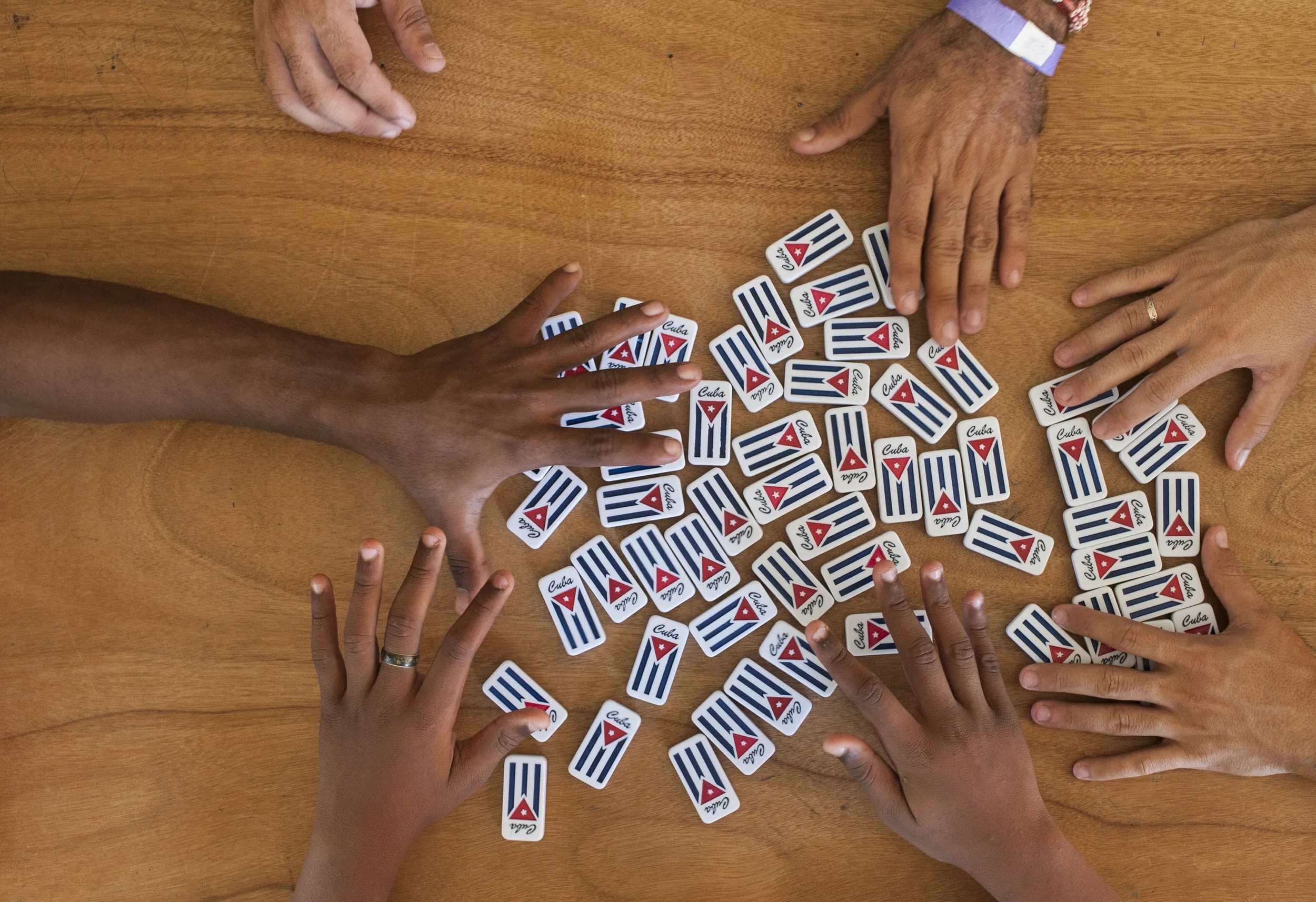
Hands of Cuban migrants Yasiel Valero, Elier Becker, Arnnier Dranguet, and Raymel Escobar reach for domino pieces to begin a new game. Dominoes is a classic game in Cuba that people of all ages and backgrounds frequently play.
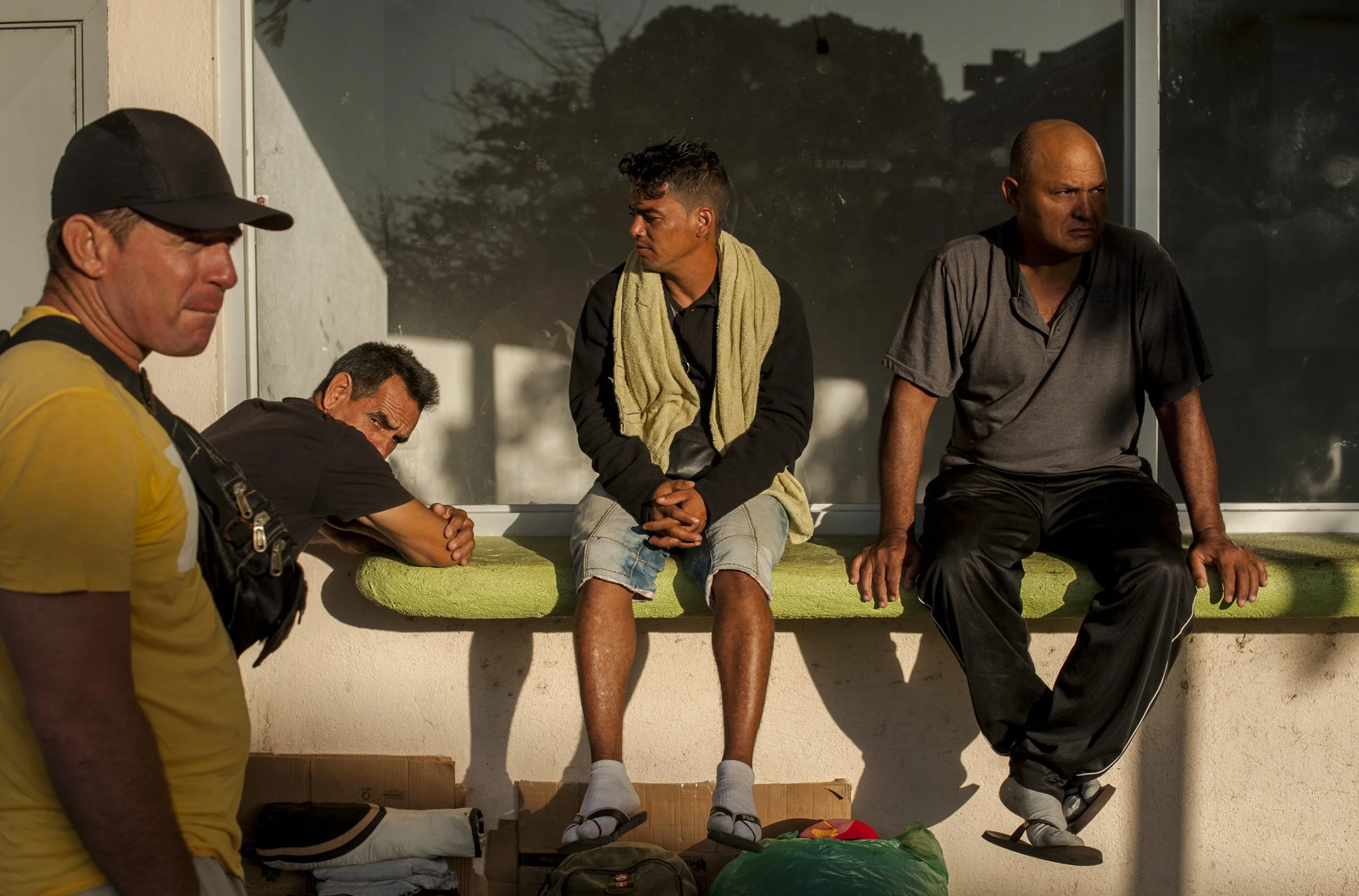
A group of Cuban men pass their time in the center of La Cruz, Costa Rica. The majority of Cuban migrants are men in their 30 or 40s that have college degrees or skilled jobs and seek higher wages in the United States to support their wives and children back in Cuba.
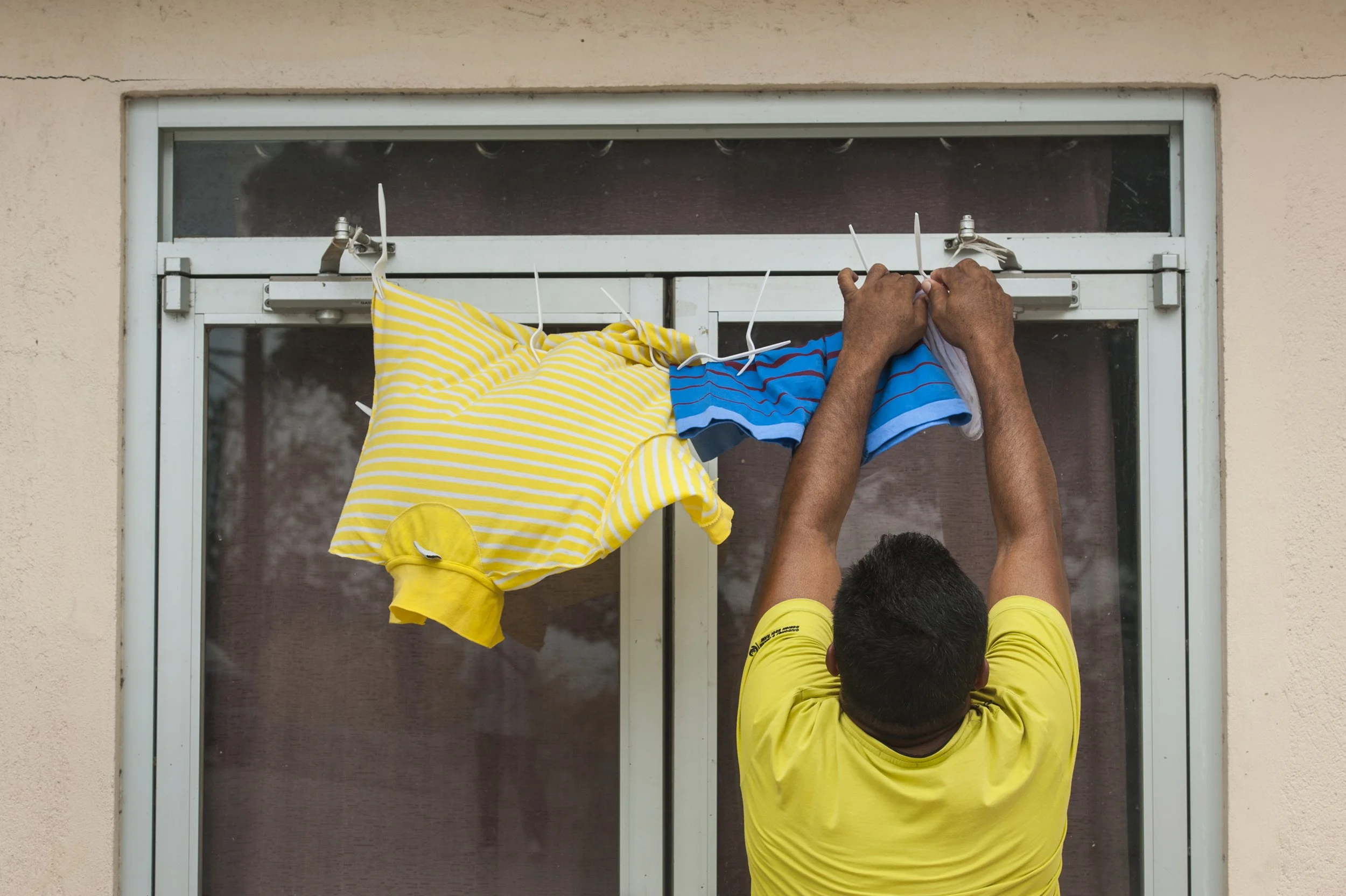
Orlando Peña Holguin-Mayari, 43, improvises a clothesline by hanging clothes on a door frame near a shelter in the center of La Cruz.
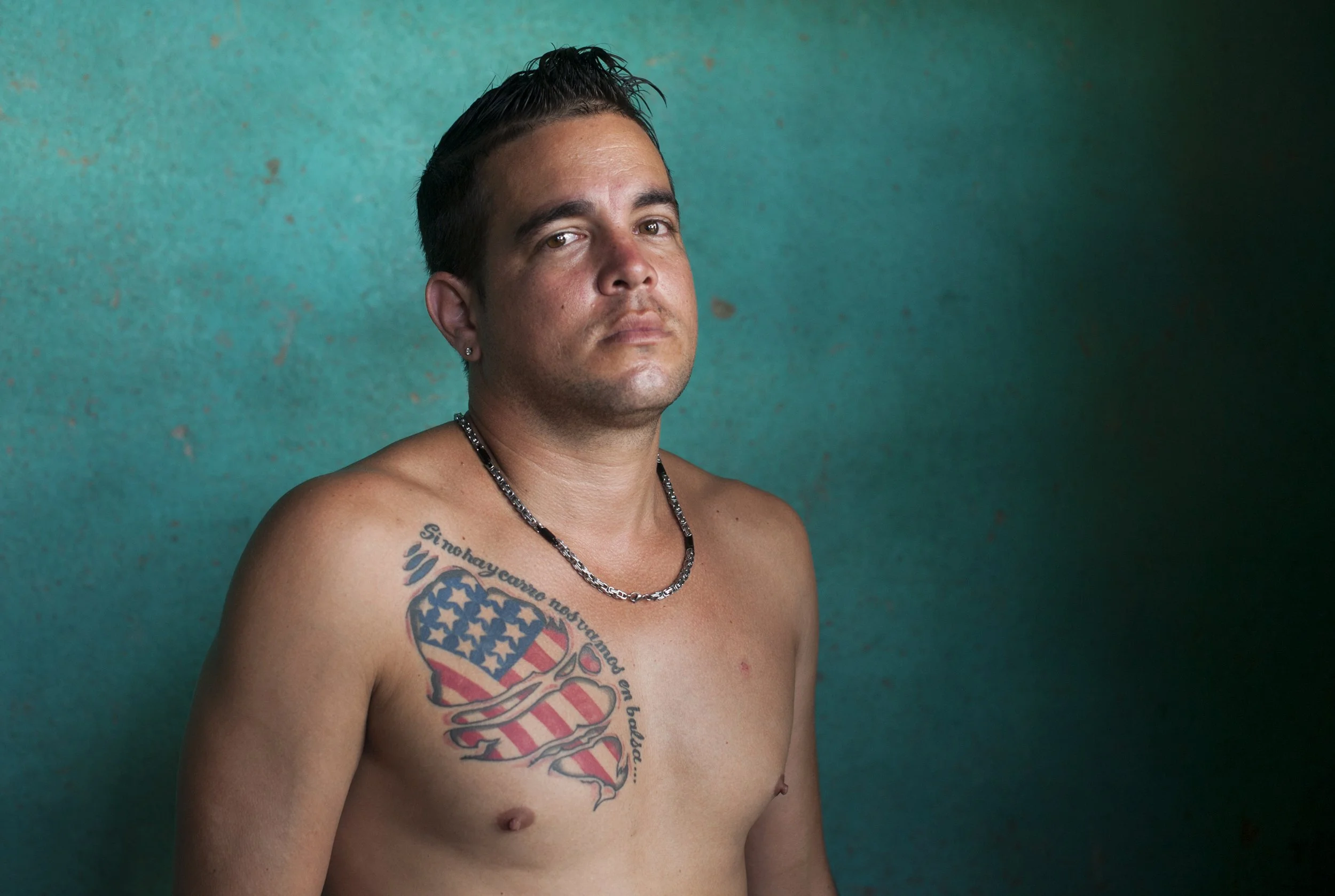
Yordanis García, 32 of Havana, left for Cuba over a year ago after spending several months working in Ecuador to save money for his trip north.
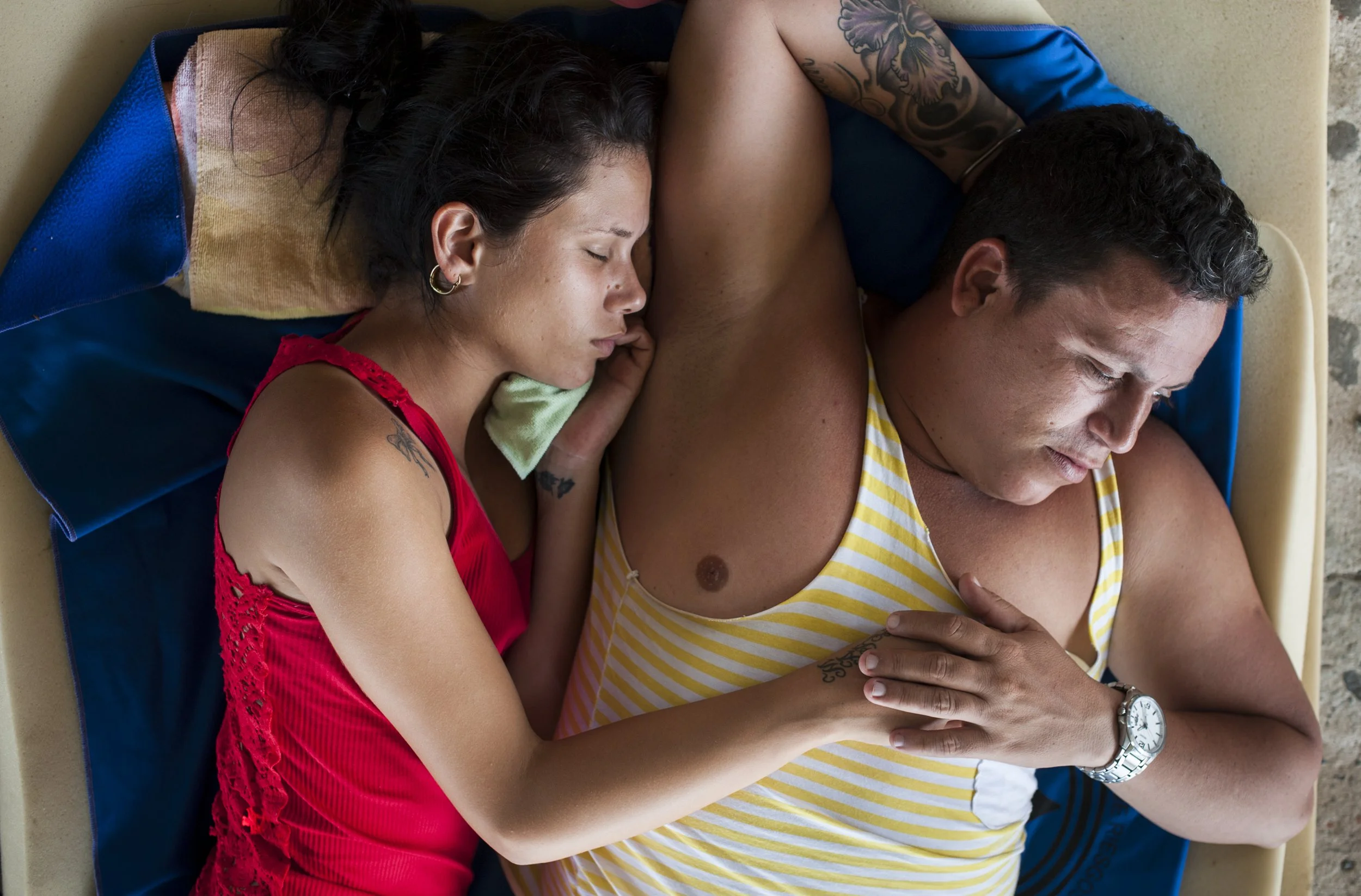
Dianelis Rodriguez Mola, 23, and Eduardo Suarez Peña, 31, rest in a shelter in La Cruz. Like many of Cuban migrants, they sold all their belongings to pay for their journey to reach United States. The young couple plans to reach Las Vegas, Nevada where they have family.
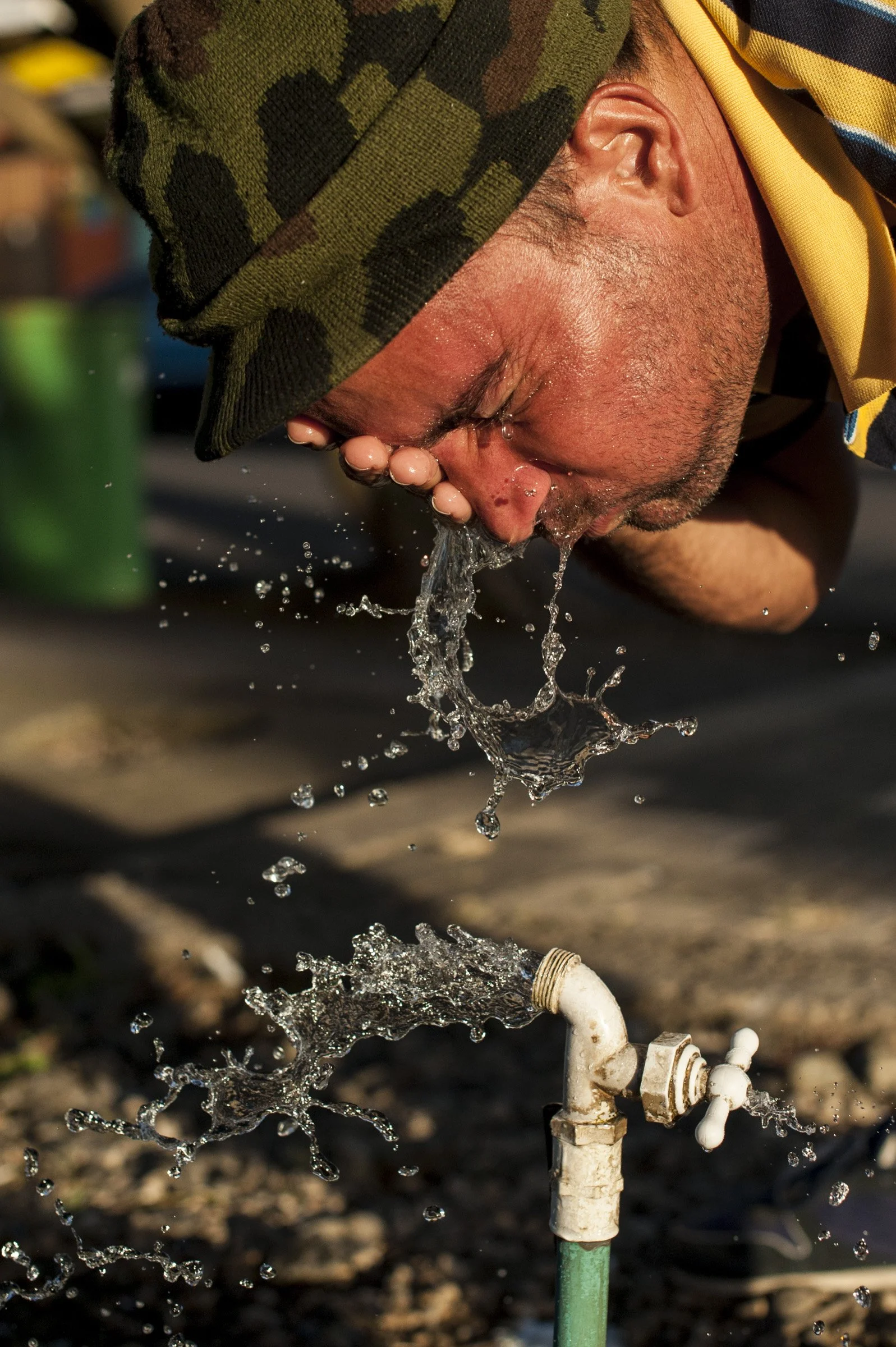
Iván Gonzalez Barista, 39 originally from La Havana, washes his face in public water faucet in the center of La Cruz, Costa Rica on Dec. 28, 2015.
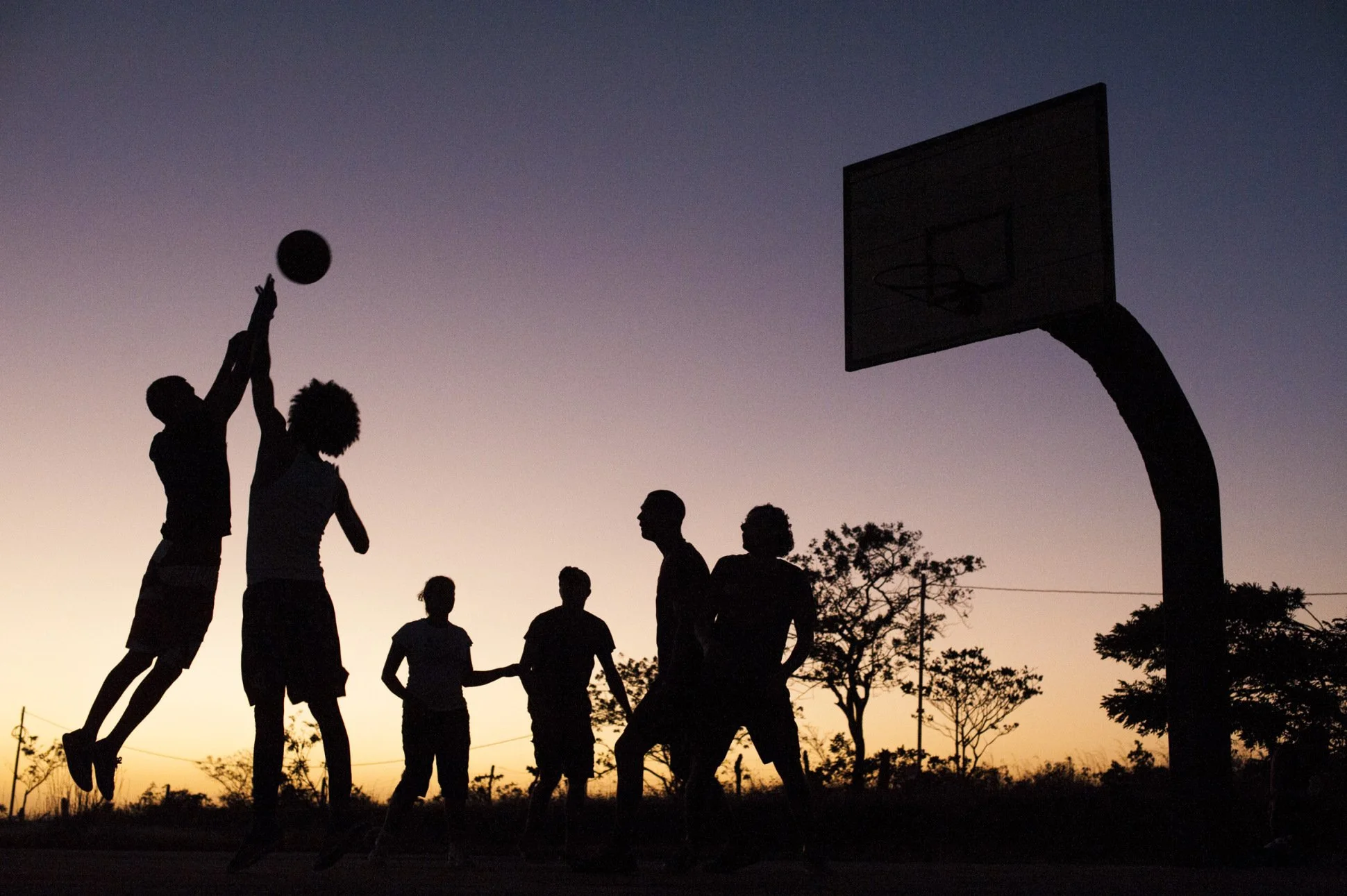
Cubans and Costa Ricans play a game of basketball in a nearby park on Dec. 28, 2015.
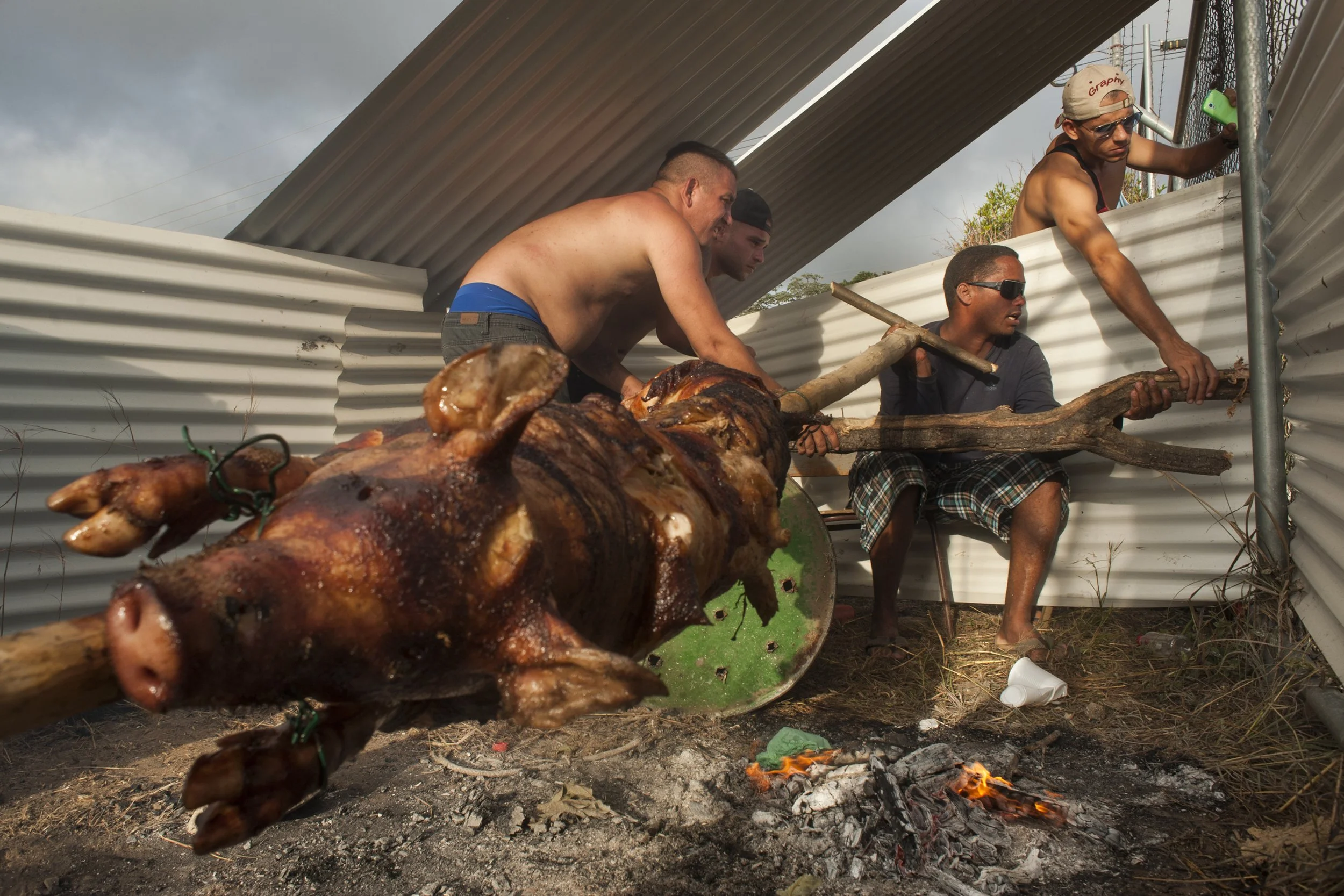
A group of Cuban men adjust a makeshift spit as they roast a pig along the fence of a shelter. The act of slow-roasting a pig is an annual tradition in Cuba to celebrate the arrival of a new year.
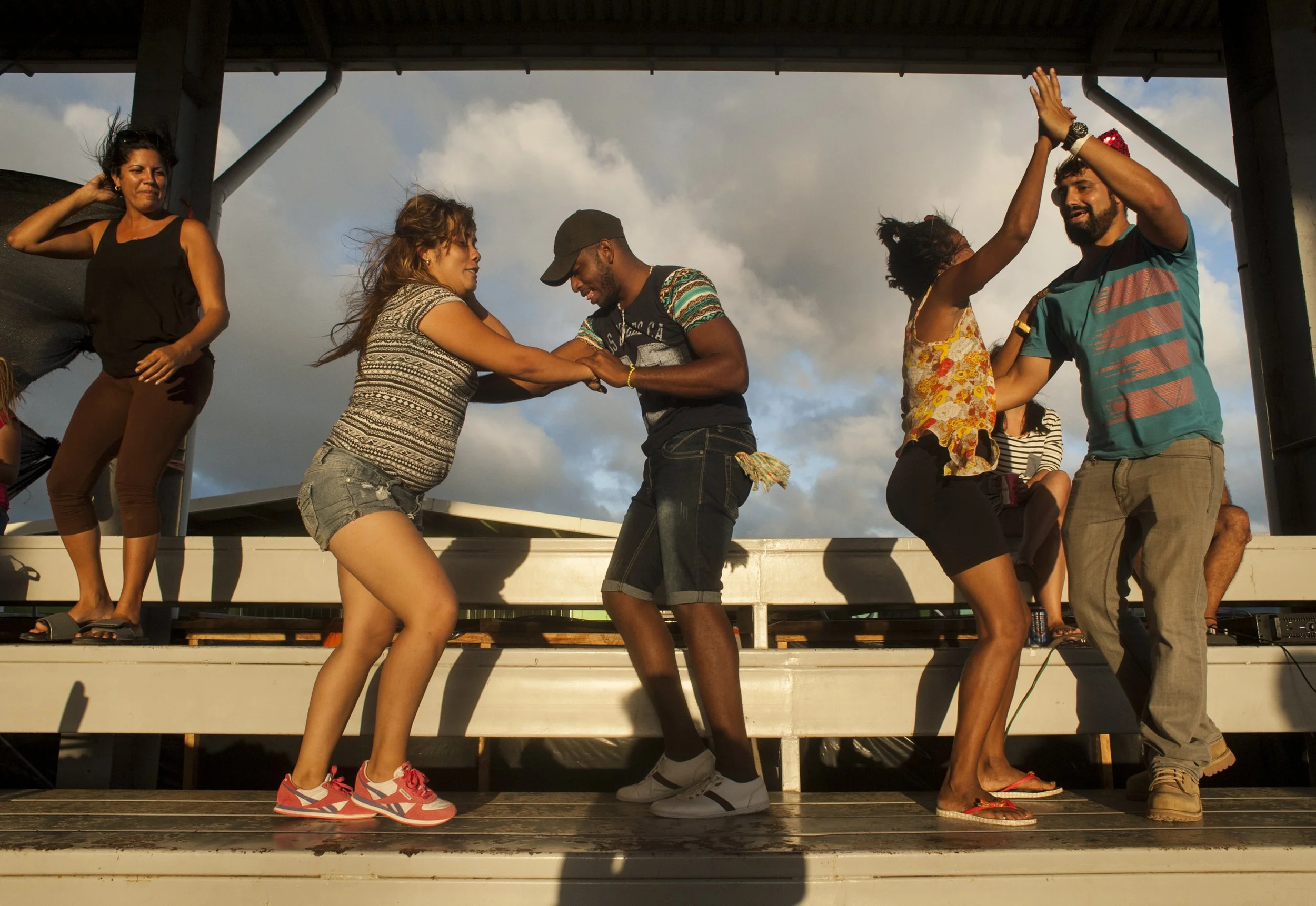
Diamelis Sanchez, left to right, Hiran Baltrell, Yalien Siaz Aguilera, and Sebastian Jimenez dance salsa in celebration of the new year on Dec. 31, 2015. Many were in good spirits when a plan was announced on Dec. 28, 2015 to airlift the Cuban migrants to El Salvador and then continue their trip by bus to reach the U.S. border.
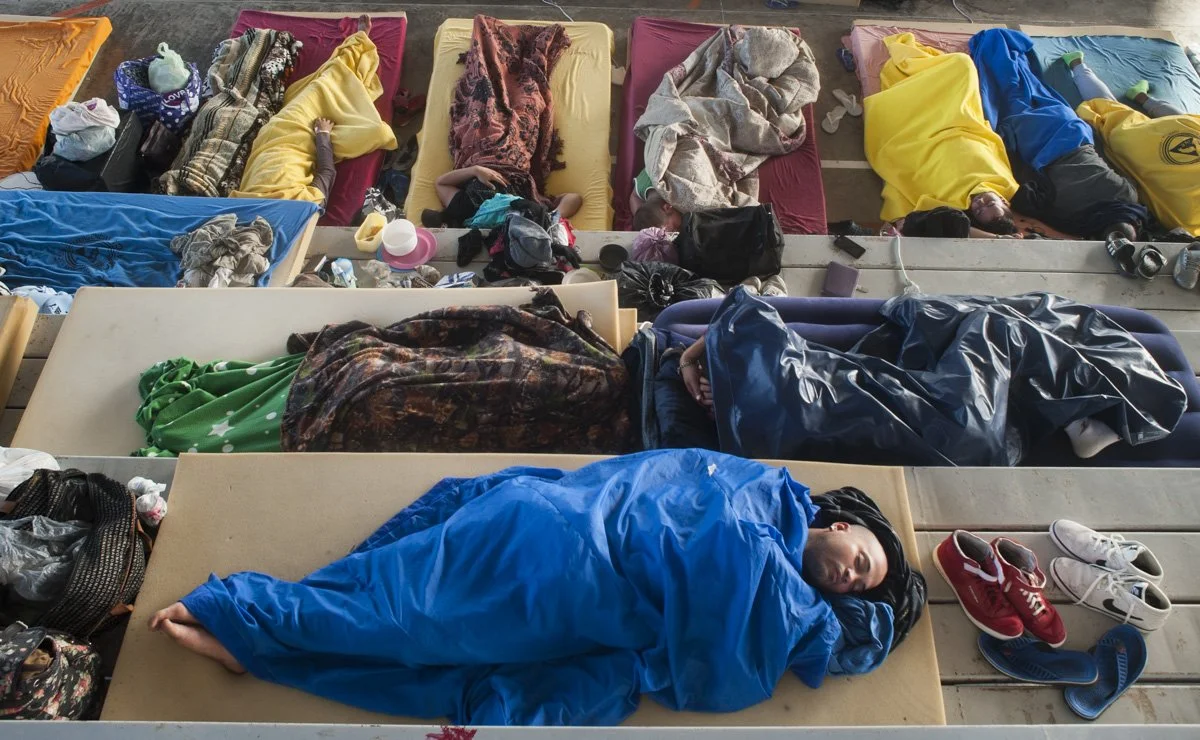
Alejandro Estebán Galvez, 23, sleeps on bleachers of a high school gymnasium among other Cuban migrants on the morning of Dec. 29, 2015 in La Cruz, Costa Rica.
In December 2015, a sleepy border town, La Cruz in Costa Rica witnessed a surge of Cuban migrants who were stranded because of international relations between United States and Cuba. Cuban migrants were en route to United States to seek refugee, but were abruptly stopped by the Nicaraguan government and met with tear gas, riot police and the national army. The president Daniel Ortega denied entrance to the political refugees because of Nicaragua’s long-standing relationship with Cuba.
The Costa Rican government in response quickly setup shelters and food relief in various churches, basketball courts, housing projects and schools in La Cruz. The Costa Rican government initiated negotiations with Central American countries and the United States officials to allow safe voyage of the Cubans to the Mexican-American border.
The town of La Cruz became a home in-between home for many of the Cubans, a quiet place to rest and reflect on their tiresome journey. After several months of being stranded, this migrant caravan successfully reached the United States with the collaboration of Mexico, Guatemala, Belize and Costa Rica.

